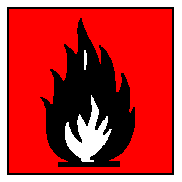International Chemical Safety Cards
| MAGNESIUM (POWDER) | ICSC: 0289 |
MAGNESIUM (POWDER) |
 |
| TYPES OF HAZARD/ EXPOSURE |
ACUTE HAZARDS/ SYMPTOMS |
PREVENTION | FIRST AID/ FIRE FIGHTING |
| FIRE | Highly flammable. Gives off
irritating or toxic fumes (or gases) in a fire. |
NO open flames, NO sparks, and
NO smoking. NO contact with moisture, acids, halogens or various other substances. |
Special powder, dry sand, NO
other agents. NO hydrous agents. NO water. |
| EXPLOSION | Finely dispersed particles form
explosive mixtures in air. |
Do NOT expose to friction or
shock. Prevent build-up of electrostatic charges (e.g., by grounding). |
|
| EXPOSURE | |
|
|
| INHALATION | Cough. Laboured breathing. |
|
|
| SKIN | |
|
|
| EYES | Redness. Pain. |
Safety goggles. |
|
| INGESTION | Abdominal pain. Diarrhoea. |
Do not eat, drink, or smoke
during work. |
Rinse mouth. Refer for medical
attention. |
| SPILLAGE DISPOSAL | STORAGE | PACKAGING & LABELLING | ||
| Do NOT wash away into sewer.
Sweep spilled substance into containers; if appropriate, moisten first to prevent dusting.
Carefully collect remainder, then remove to safe place (extra personal protection: P2
filter respirator for harmful particles). |
Fireproof. Separated from strong
oxidants, acids, carbonates, halogens (see Chemical Dangers). Dry. |
Airtight. F symbol R: 15-17 S: (2-)7/8-43 UN Hazard Class: 4.3 UN Subsidiary Risks: 4.2 |
||
| SEE IMPORTANT INFORMATION ON BACK | ||||
|
||||